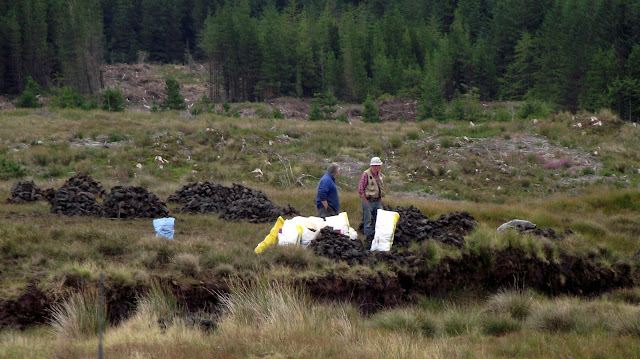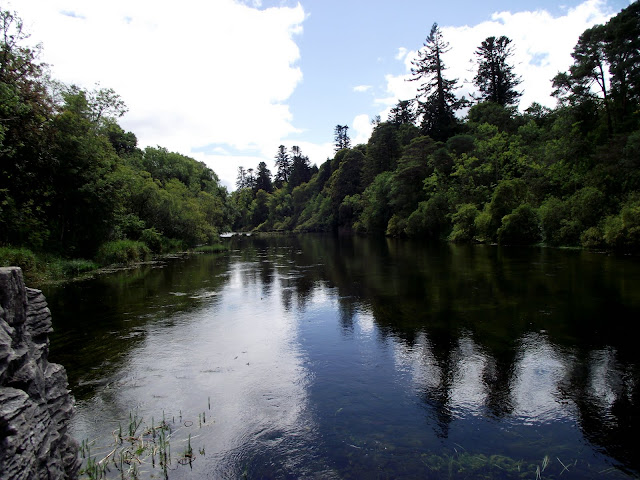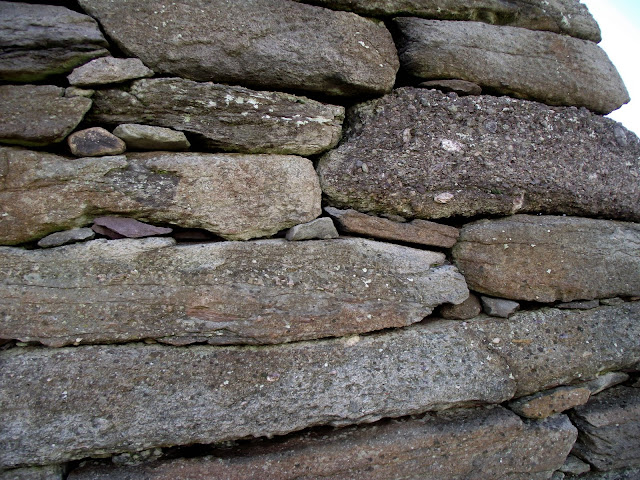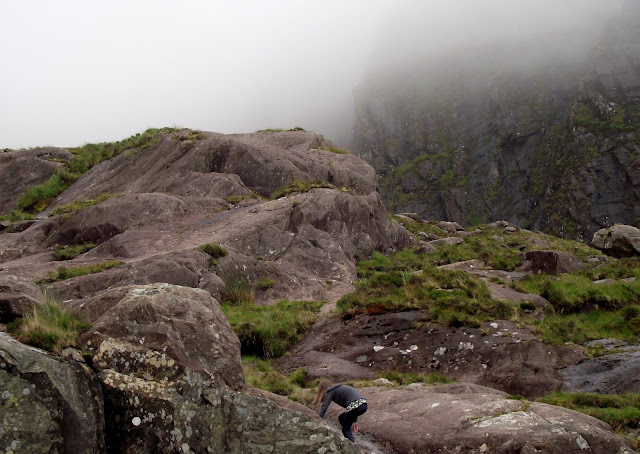I feel like we've driven for hours, but we're still too early to check into our B&B in Trim. So, since we're obviously in Ireland, we'll do as the Irish might, and pop into the nearby pub to order a half pint and enjoy a little conversation. We're pretty sure we'll be entertained or enlightened with what we find, but this was a real surprise.
As you can tell, this was not a fancy pub. In fact, it was a little dingy, and I was surprised BC chose it. We parked our car across from "The Steps", walked in and found a barman on duty with three locals sitting at the bar. Two sat to the left of the barman, and the other, a younger fellow, was near the end of the bar on the right. We left a few seats open in both directions, but sat down toward the left side. All four men were chatting--they obviously knew each other well. I ordered my Stella Artois while BC had a Guiness. We were obviously strangers to Trim and "The Steps" and, for them, it was simply another day and another curious tourist. Initially, they talked more around us than to us.
After ten minutes or so of neutral chit-chat, the gray and grizzled gentleman to my left moved over to sit right next to me. It's pretty obvious he'd been there most of the day so his words were not only a bit slurred and sloppy, but he also spoke with a thick brogue accented by melodic ups and downs in tone. He sidled in very close and began a conversation that I could not understand at all. Of course, I'm trying to be my usual nice/sweet self so I'm being polite by saying "uh huh" every time he paused, and then I would smile. He is talking and talking and I'm listening and listening and finally I begin to make a bit of sense out of what he is saying.
He is talking about the movie "Braveheart," which was partially filmed here in Trim. Specifically, at the Castle, where the Trim Castle Gate was in play. He was involved (I think) in part of the filming...something about opening the fookin Castle Gate so that fookin Mel Gibson could do whatever he was fookin supposed to do. Mel must have had an off day, because the gentleman who is ooching ever closer to my left while I precariously lean more and more to my right, actually had to open the fookin Castle Gate fifteen times for the fookin filming. And, after all of that, his paycheck was only a fookin fifteen hundred pounds. I think. Actually, I thought that fifteen hundred pounds was pretty good pay, but apparently it was not fookin enough. And the gentleman was still ticked off. At one point, the barman did interrupt when the fookin guy on my left, apparently really let go with the language (which I couldn't understand anyway) and he was quiet for a few seconds.
That gave me a chance to look at my watch and see that it was nearly Opening Time at our B&B. We guzzled what was left of our beer, told everyone good-bye, and ran for the door. We laughed all the way to our lodging--only getting lost and confused a few times, and considered this one of our best afternoons yet.
Trim Castle, as so many others, began construction in the 1100's, continuing off and on for the next three hundred years or so. It was a unique design for its time, containing a three-story keep that was built in a cruciform shape with twenty corners. As with all great plans of mice and men, it's unique style didn't keep all attacks at bay, but its worst enemy has been time.
Inside the keep, this wall shows where floor joists would have been placed to create a higher story. The castle itself was purposely built to be something of a maze in order to protect its occupants. We watched Braveheart after we returned home, but didn't recognize much about the castle except the stone walls. The gate scene, that played such a large part in our previous afternoon was so dark I missed that it was the fookin Trim Castle.
Our view from the top of the castle looking toward the town of Trim. The River Boyne is in the foreground, and remains of the castle are directly beside it. Back in the day, ships could sail from the Irish Sea up the river to the castle's front door.
This was one of Ireland's beautiful days. The sun is always welcome but, also always prone to pop in and out.
Trim was a pretty little town with its share of notables. Jonathan Swift of Gulliver's Travels fame lived here when he was a Vicar in the Church of Ireland. It's only about 45 minutes from Dublin, which makes it a popular stop for first or last nights in Ireland. We loved it.

















































